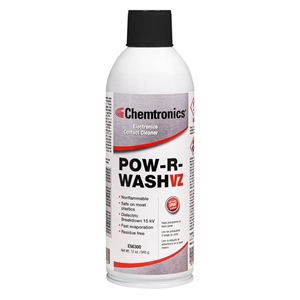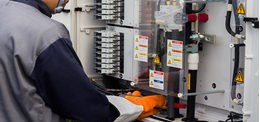Pow-R-Wash VZ
Nonflammable electronic contact cleaner that is safe on most plastics
Pow-R-Wash™ VZ electronic contact cleaner is a highly effective nonflammable solvent cleaner for electrical and electronic contacts and assemblies. The non-ozone depleting solvent system quickly remove oils, oxides, and other contaminants from metal contacts. Pow-R-Wash VZ Contact Cleaner is specially engineered to restore and improve electrical continuity on energized equipment.
VERIZANE™ Cleaning Chemistry (VZ) - Engineered to replace HCFC-141b, these low odor, no flash, nonflammable aerosols offer the most cleaning value for your money.
So ditch the dirt — without blowing your budget!
New improved formula with lower global warming. (click link for more info)
Features & Benefits
- Nonflammable
- Dielectric Breakdown 15 kV
- Noncorrosive
- Evaporates quickly without leaving residue
- Ideal AK225 replacement
Applications
- All repair and maintenance contact cleaning
- Cleaning of metal contacts, plugs and sockets, solenoids
- Removing oxidized soils from switches, circuit breakers, motors and armatures
| TDS | |
| REGS | |
| SDS | |
| Categories |
| Shelf Life | 5 yrs. |
|---|---|
| Shipping Name | Consumer Commodity ORM-D |



